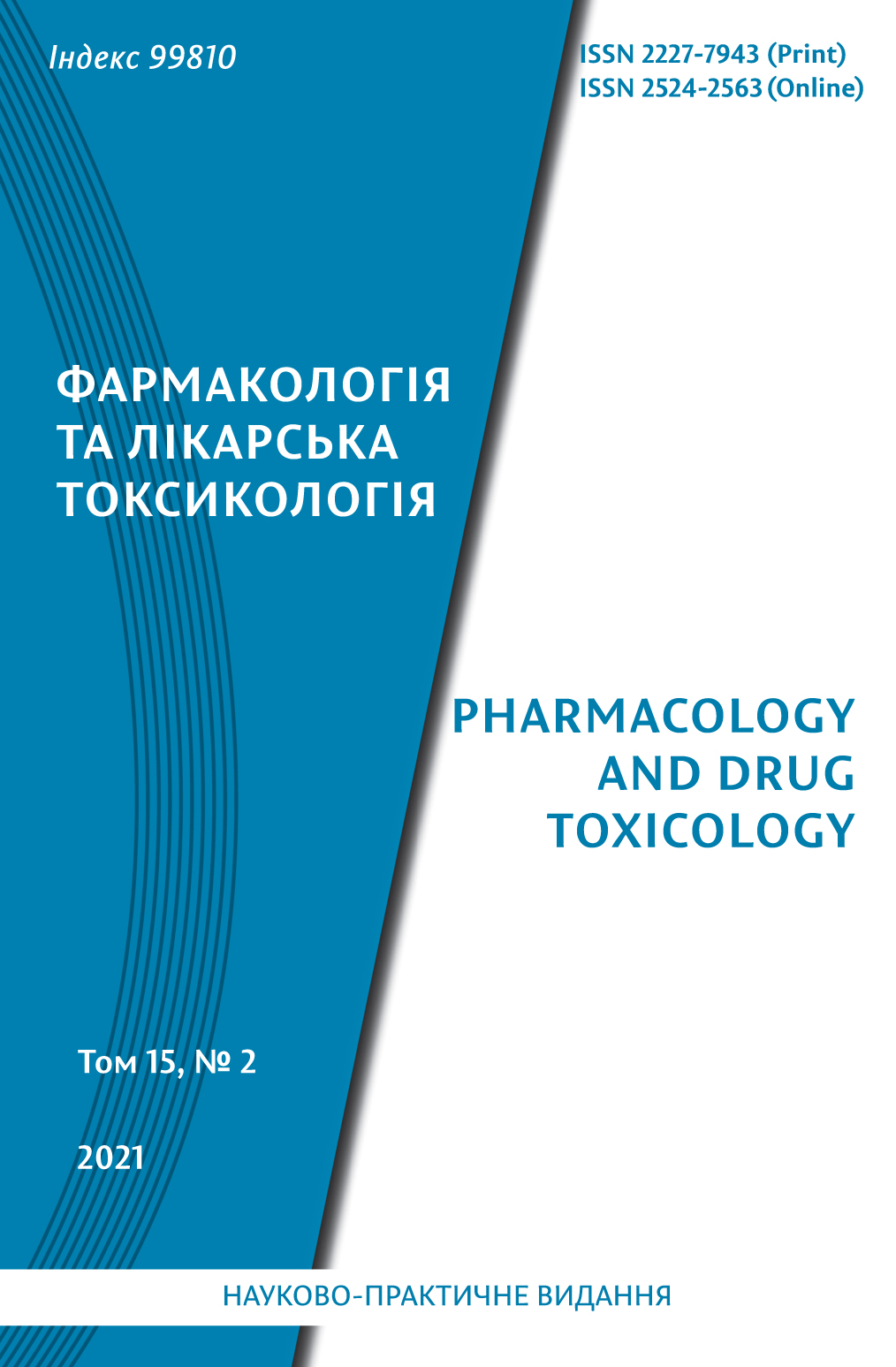Abstract
Cognitive impairments are one of the most important medico-social problems. Modern nootropic drugs contribute to the improvement of cognitive functions, but they are not devoid of various side reactions. Based on this the creation of new nootropic drugs is relevant. Newly synthesized derivatives of 4-aminobutanoic acid are promising in this regard.
The aim of the study – evaluation of the effect of two leading compounds in antiamnestic activity among 4-aminobutanoic acid derivatives on the functional state of the central nervous system and their antihypoxic properties.
The study of the effect of two compounds on the state of the central nervous system was carried out in the «open field» test 15 min after its intraperitoneal injection at doses of 30 and 50 mg/kg. The antihypoxic effect of the compounds was studied on a model of normobaric hypoxia with hypercapnia in mice. The reference drug was piracetam, which was administered intraperitoneally at a dose of 200 mg/kg.
Under the influence of 4-(di(hydroxymethyl)amino)butanoic acid at a dose of 30 mg/kg, there were no significant changes in the motor-exploratory and emotional activities of mice, although all the studied parameters were lower in absolute values compared to the intact control. After administration of this compound in a higher dose of 50 mg/kg, there was a decrease in the indicator of the sum of activities, significantly as to intact control and piracetam. 4-(benzyl(methyl)amino) butanoic acid has a dose-dependent effect on the state of the central nervous system: a sedative effect at a dose of 30 mg/kg and a slight stimulating effect at a dose of 50 mg/kg. This compound has a pronounced antihypoxic effect and exceeded the reference drug piracetam, which at a dose of 200 mg/kg did not reveal any antihypoxic effect as well as compound 4-di(hydroxymethyl)amino) butanoic acid.
Thus, the results obtained showed, that 4-(benzyl(methyl)amino)butanoic acid has a dose-dependent effect on the central nervous system: a sedative effect at a dose of 30 mg/kg and a slight stimulating effect at a dose of 50 mg/kg. 4-(di(hydroxymethyl) amino)butanoic acid has a dose-dependent sedative effect,
most pronounced at a dose of 50 mg/kg.
Considering that 4-(benzyl(methyl)amino)butanoic acid has antiamnesic and in the most active dose of 30 mg/kg sedative and antihypoxic effects, this compound is promising for further research.
